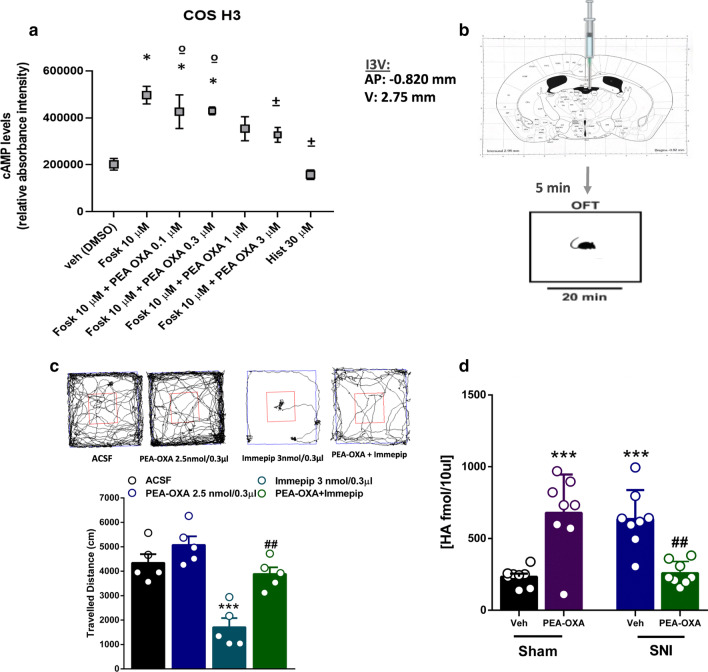Fig. 1.
Effect of PEA-OXA in COS cells stably expressing human histamine H3 receptors (a). Scatter plots showing the effect of PEA-OXA in COS cells expressing histamine H3 receptors on intracellular cAMP levels. Data represent the mean ± S.E.M. of four separate determinations. Data sets were compared using t-Test and ANOVA followed by Tukey’s test. The asterisk indicates a p value ≤ 0.05 vs vehicle. The symbol (±) indicates a p value ≤ 0.05 vs forskolin. The symbol (º) indicates a p value ≤ 0.05 vs histamine. Effects of single injection of PEA-OXA (2.5 nmol/0.3 μl i.c.v.) on Immepip-induced decreased locomotor activity in into third ventricle (I3V) of Naϊve mice (b, c). Representation of coronal sections of the mouse brain with the cannula placement in I3V (b), Representative traces of mouse movement during an open field test (c upper panel). Total distance traveled in OFT (c lower panel). Data are represented as mean ± SEM of 5 mice per group. **p < 0.01 and ###p < 0.001 indicate significant differences compared to ACSF or Immepip. One-Way ANOVA, followed by Holm-Sidak's post hoc test for multiple comparisons test was performed. Effect of the chronic treatment with vehicle (kolliphor 5% in saline, v/v, i.p.) or PEA-OXA (10 mg/kg, i.p.) on the Histamine release in the hippocampus CA3 (d). Data are represented as mean ± SEM of 8 mice per group. Two-way ANOVA, followed by Tukey's post hoc test for multiple comparisons test were used for statistical analysis. p < 0.05 was considered statistically significant. Symbols indicate significant differences: ***vs Sham/veh (p < 0.0001) and ##vs SNI/veh (p < 0.001), respectively

